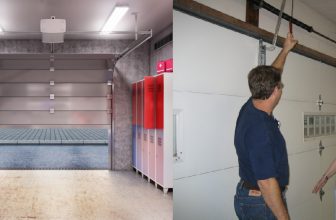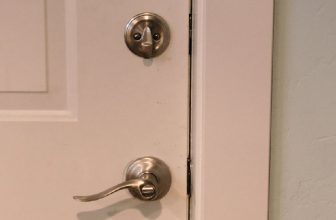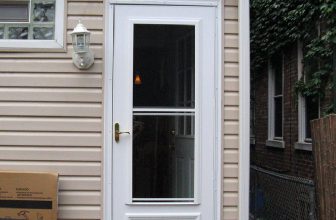How to Build an Awning Over a Door
An awning over a door can provide some much-needed shade and protection from the elements. It’s an attractive addition to any home, and it adds value to your property. Plus, if you do it yourself, you’ll save money! With just some basic tools and materials, you can have a beautiful awning quickly and easily. Building an awning over a door offers many advantages.
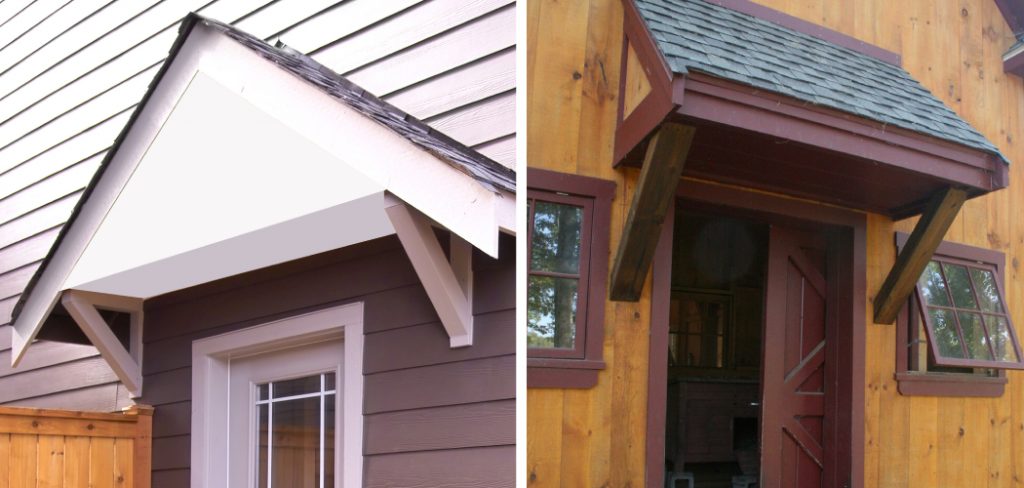
An awning provides shade and protection from the elements. It can lower indoor temperatures, reduce cooling costs substantially, block UV rays that can cause fading to furniture or carpets, and create an attractive entrance for any home or business. When properly installed, an awning can last for years and provide additional protection from the elements. Additionally, awnings are relatively easy to build as DIY projects and require minimal materials. In this blog post, You will learn how to build an awning over a door in detail.
Tools You Will Need
- Measuring Tape
- Drill and Bits
- Level
- Miter Saw
- Hammer
- Hacksaw
- Circular Saw
- Tapcons or Other Anchoring Systems
- Caulking Gun
- Lumber, Fabric, and Hardware (everything you will need to build the awning)
Step-by-step Instructions for How to Build an Awning Over a Door
Step 1: Inspect the Area
Before you begin, visually inspect the area around your door to ensure it can accommodate an awning. Measure the length, width, and height of the door and surrounding area to determine what material and size will best fit in the space.

Step 2: Select Your Material
You can choose from canvas, metal, or polycarbonate for your awning. Metal is the most durable and long-lasting but will be more expensive than the other two options. You will need to build your awning on a flat surface that can handle the weight of your material. A concrete patio or driveway works best for this project. Place a tarp down on the area to contain any mess that may occur during the process.
Step 3: Cut Your Material
You will need to cut your material to size with either tin snips or a hacksaw, depending on your chosen material. Make sure to measure twice and cut once. Use metal brackets to attach the awning material to the wall. Drill pilot holes for the screws, and then secure them with masonry nails or lag bolts.
Step 4: Install the Awning
Place your awning onto the brackets you have attached to the wall, and make sure it is centered and level. Secure the awning onto the brackets using bolts or screws, depending on your chosen material. Ensure your support braces are installed correctly to ensure your awning stays secure and does not blow away in high winds. Measure out where you need to place the braces, then drill pilot holes and secure them with screws.

Step 5: Paint or Stain the Awning
For metal awnings, choose a color of paint that coordinates with your home’s exterior. Canvas and polycarbonate can be stained instead of painted if desired. If desired, attach a rain gutter to your awning so that water will be directed away from the door. The gutter should be attached at least 3 feet away from the side of the house and slanted slightly downwards to allow for proper drainage.
By following these steps, you can easily build an awning over your door that will provide years of protection and beauty. Always take the necessary safety precautions when working with tools and materials, and consult professional help if needed.
Safety Tips for How to Build an Awning Over a Door
- Always wear safety glasses when working with power tools and other materials to minimize the risk of injury.
- Ensure that you have the proper measurements for the area before beginning your project; this will help ensure success in constructing an awning over a door.
- Make sure to turn off any electricity in the work area to avoid any potential shock.
- Securely support the awning with braces and screws in order to prevent it from falling when opened or closed.
- Follow the manufacturer’s instructions carefully and stay up-to-date on local building codes while constructing an awning over a door so that your project complies with regulations.
- Make sure to use appropriate tools for the project; a power saw, drill, and jigsaw are often used when constructing an awning over a door.
- Be aware of weight limits on the structure, or else the awning may not be secure and could cause injury if it collapses.
- Wear appropriate clothing for the job and keep young children away from the work area.
Following these safety tips can ensure a successful and safe project when building an awning over a door.

How Do You Protect the Awning From Damage or Wear and Tear?
Once you have an awning installed over your door, you will need to consider ways of protecting it from damage or wear and tear. Depending on the type of material that the awning is made of, there are different methods to ensure its longevity. If you have an aluminum awning, then you can apply a clear sealant to the material.
This will help protect it from any water damage or rust, which can be caused by rain and snow. Additionally, you should regularly inspect your aluminum awning for signs of wear and tear, such as dents or cracks, and repair them as soon as possible to minimize any further damage. If your awning is made of canvas, you can take a few steps to protect it. First, you should make sure that the canvas material is waterproof and treated with a UV-protective finish. This will help keep it from fading in color or becoming weakened by water damage.
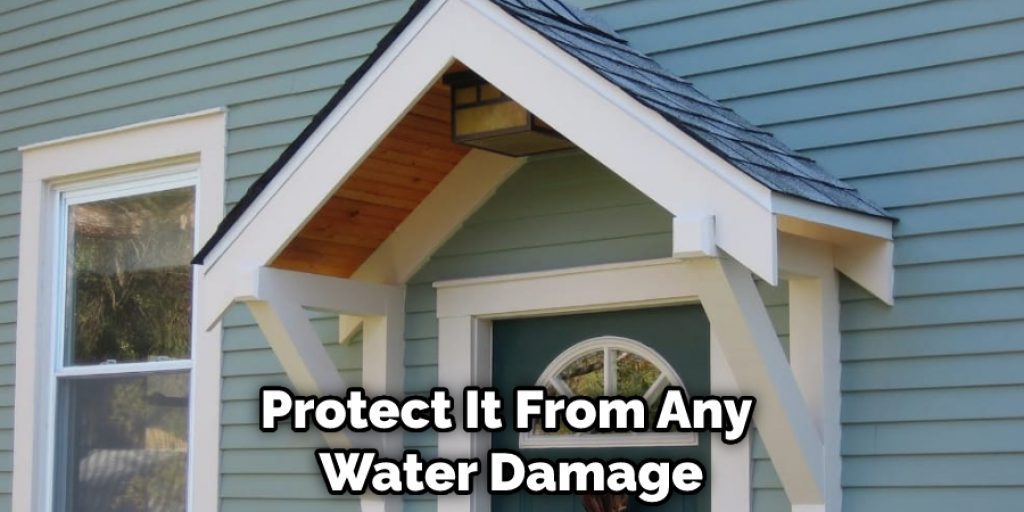
How Much Will It Cost for Materials and Labor for This Project?
The cost of materials and labor for building an awning over a door varies depending on the size and complexity of the project. Generally, materials are estimated to range from $30-100 per linear foot, while labor costs can be anywhere from $25-75 per hour. Additionally, depending on the type of material used, additional costs may be associated with special coatings or treatments.
It is important to consider all of these factors when budgeting for the project and also when choosing a contractor to complete the work. A reputable contractor should provide an accurate estimate based on the size and complexity of the project before beginning any work.
In addition, it is important to note that some permits and inspector fees may be necessary for certain projects, depending on the city or county regulations. It is wise to consult with local authorities before beginning any construction work in order to determine any potential costs or fees associated with the project.
How Can You Find Professional Advice if Needed for Construction or Installation?
If you need professional advice on building an awning over your door, various resources are available. You can contact local metal fabrication shops or specialty building supply stores in your area for advice and guidance. Alternatively, you can consult a general contractor with experience constructing awnings over doors. If you have any questions about a particular type of material or need advice on how to best go about constructing the awning, these professionals can provide invaluable assistance.
It is important to note that you should always get comprehensive advice before beginning any new construction project, especially if it involves the installation of hardware and building materials. Hiring a professional will save you time, money, and frustration in the long run. With their expertise, they can make sure your awning is built to last, looks great, and is properly installed. Additionally, you may be able to find instructions for building your own awning online as well, which could help save money by avoiding extra costs associated with hiring a contractor.
Conclusion
One of the biggest disadvantages of building an awning over a door is that it can be difficult and time-consuming. The process involves measuring, cutting, and assembling materials which can be challenging for those without experience in construction or DIY projects. Additionally, if no measurements are taken correctly, or the wrong materials are used, the awning can be unstable and may not provide the adequate protection that it was meant to.
In conclusion, building an awning over a door can greatly add style, beauty, and functionality to any outdoor space. With the right tools and materials, you can have an attractive, professional-looking awning over your door in no time. Be sure to take care when selecting materials for the frame and fabric of your awning as well as follow manufacturer instructions for proper installation and maintenance. I hope this article has been beneficial for learning how to build an awning over a door. Make Sure the precautionary measures are followed chronologically.

